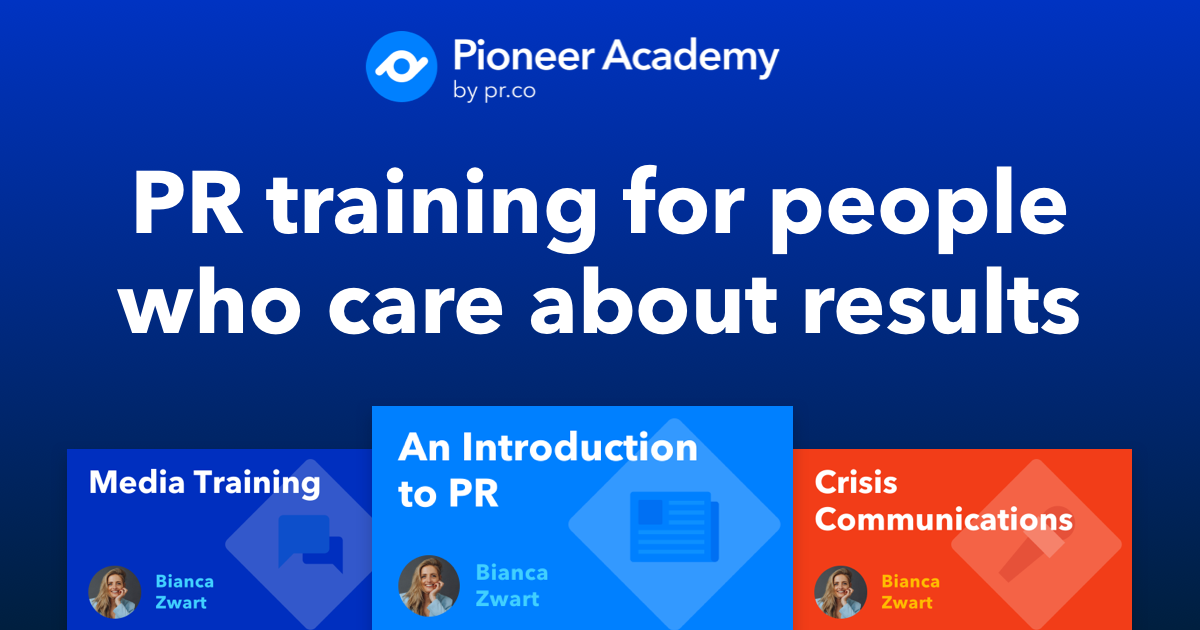Many PR professionals still have AI trust issues. They worry that AI will jeopardize their brand’s reputation instead of enhancing it, especially if used a tad too enthusiastically.
Rest assured, with the right approach, Artificial Intelligence can streamline your workflows, enhance media monitoring, add creative spark, and give you more bandwidth and hours in the day to dream up standout campaigns.
But AI isn’t a magic wand. In inexperienced hands, tools AI-powered tools like ChatGPT, Claude.ai, and Google Gemini can create bland content, oversimplify issues, and raise concerns about privacy and bias.
Wondering how to harness AI ethically and effectively in digital PR? This article explores the dos and don’ts of using AI tools for PR to help you navigate this transformative technology with confidence and get actionable insights to integrate AI in your PR strategy.
_Nick_Fancher_Photos_ID6169%20(3).jpg?width=2000&height=1000&name=DTS_Misc_1_(Nich_Fancher)_Nick_Fancher_Photos_ID6169%20(3).jpg)
AI in the PR Context
Today’s top PR professionals use AI for various tasks, saving precious time and energy along the way.
In the PR world, artificial intelligence can:
- Automate repetitive tasks like data analysis, media monitoring, media outreach, and reporting.
- Assist in taking meeting notes by transcribing conversations, highlighting key points, and generating action items to ensure nothing gets overlooked.
- Process vast amounts of data to provide valuable insights for better, faster decision-making.
- Assist in content creation.
However, using generative AI tools for PR isn’t a substitute for human judgment and creativity. And today’s AI assistants also struggle to understand nuance. The relationships PR professionals build with journalists and other stakeholders—a key component of what gets their brands the coverage they seek—also can’t be replaced by AI assistants.
The Dos of Integrating AI in PR
While it’s true that today’s AI tools for PR professionals are changing the game, winning at PR still relies on emotional intelligence, human storytelling, and creativity, and strong interpersonal skills.
Let’s take a closer look at how to integrate the latest AI technology into your workflows, ensuring you combine these skills with the wide range of powerful benefits AI offers.
Do use AI to save time:
- Automate time-consuming tasks like media tracking, press release distribution, and competitor analysis. Let AI do the heavy lifting for you.
- Use AI-powered sentiment analysis and social listening to gauge audience reactions and analyze customer reviews, surveys, and social media conversations.
- Prompt your AI assistant to generate initial content drafts or create interview questions to prep you for upcoming media engagements or client discussions.
The list goes on! Check out our “10 Ways PR Professionals Should Use AI in PR” article for more.
Do maintain transparency and high ethical standards:
- Where it makes sense, explain how your AI systems collect, store, and use customer data.
- Develop clear standards and guidelines around using AI in your team’s PR activities.
- Identify and address potential biases in AI algorithms to avoid perpetuating discriminatory practices.
- Where possible, disclose how AI has informed your PR content or decisions.
Do keep a human in the loop:
- Ensure that the AI tools you use assist, not replace, PR professionals.
- Get a PR professional to review and fact-check all AI-generated content. Be mindful of how AI can unintentionally alter your core messaging.
- Personally maintain journalist and stakeholder relationships. Although AI can suggest relevant journalists and provide valuable insights, trust is ultimately built through authentic conversations and connections.
Do evaluate your AI stack regularly:
- The best AI tools for PR professionals evolve rapidly. Regularly assess whether the solutions in your suite of tools are still your best options.
- Keep an eye on updates. Popular AI tools like ChatGPT and Claude.ai constantly change and improve.
- Seek feedback from your team to identify how you should or shouldn’t adjust the tools you use.
Choosing software that combines AI with other valuable features aimed at PR professionals makes perfect sense.
PR.co, for example, integrates AI to help PR teams make light work of writing headlines, meta descriptions, emails, and social media posts. Schedule a chat to discover how our platform can streamline your PR efforts.
The Don’ts: Common AI Pitfalls To Avoid
As you learn to wield AI’s power to enhance your PR efforts, avoid some of the mistakes other public relations professionals make.
Don’t get too overreliant on AI for messaging:
Relying solely on AI to produce press releases, social media posts, and other PR materials can lead to bland, inaccurate key messages.
Don’t rely too heavily on AI technology for tasks that require human creativity, lateral thinking, and strategic insights. Always ensure an experienced human PR professional reviews and refines AI-generated drafts.
Don’t ignore ethical considerations:
- AI can inadvertently introduce bias. Always double-check data sources and AI-generated outputs to check for prejudiced language.
- AI is a powerful tool, but it can also be dangerous. For example, creating hyper-realistic but fabricated audio or video content can be useful. However, it can also be exploited to spread misinformation or manipulate public opinion. Always consider the impact of the materials you create with AI.
- AI doesn’t create original content—it repurposes existing information. Avoid plagiarism by simply paraphrasing AI-generated content.
- Handle confidential information with care to maintain data security and compliance.
Don’t assume AI knows best:
AI analyzes past data but lacks instinct, creativity, and emotional intelligence. Comms professionals should always do a sense check and reflect on whether the insights provided align with your industry knowledge and instincts.
Don’t use AI without proper training:
Make sure your team is well-versed in using the latest innovative AI tools for PR professionals.
Adopting AI without adequate preparation can lead to various issues, from inaccuracies in content and data analysis to miscommunication with stakeholders, team frustration, and resistance to change.
Take a measured approach: Provide comprehensive training on the available AI tools and their applications in PR and encourage experimentation in a low-stakes environment.
Step-by-Step Guide: Creating a Custom AI Assistant
AI’s ability to help PR teams save time and drive efficiencies is exciting. But the painstaking process of uploading the same resource files and re-entering similar prompts whenever you want your AI assistant to help isn’t a smart way of working.
Fortunately, it’s easy to build your own customized AI chatbot. Here’s how to get started (no special technical or coding skills required):
Step 1: Define your objectives
- Identify repetitive tasks AI can handle (e.g., drafting emails, monitoring media, reporting, writing draft press releases, and scheduling routine tasks).
- Determine the type of AI assistance you need: An AI chatbot, an automation tool, or an analytics engine.
- Start by setting up a versatile AI assistant. As you and your team gain experience, you can tailor your setup to meet specific needs.
Step 2: Choose the right AI tools
- Opt for AI solutions designed specifically for PR professionals, such as PR.co’s AI-driven platform.
- Tap into advanced generative platforms like ChatGPT, Claude.ai, Google Gemini, or Perplexity, which provide customizable tools—“GPTs,” “Projects,” “Gems,” or “Spaces.” These tools can be tailored to meet your unique requirements.
Step 3: Gather training resources
- Feed the AI assistant tool data: Past press releases, tone of voice guidelines, frequently used templates, relevant data, media lists, etc.
- Set parameters to ensure your AI-generated content aligns with your brand and/or campaign messaging. For instance, a sustainable fashion brand might instruct its AI tool to emphasize eco-friendly materials and ethical manufacturing processes, ensuring every piece of content reinforces core brand values.
Step 4: Train your AI assistant
- Develop specific prompts that guide your assistant’s responses, ensuring they align with your desired outcomes. For example, instead of asking, “Write a press release about our new product launch,” you could say, “Create a concise, newsworthy press release announcing our sustainable packaging initiative that emphasizes our industry leadership, includes a quotable statement from our CEO, and connects to current environmental concerns.”
- Note that clarity is key when it comes to effective prompting. Be super specific to avoid ambiguous outputs.
Step 5: Test, monitor, and improve
- Regularly evaluate your AI assistant’s performance, making adjustments to improve accuracy and relevance.
- Run trial campaigns and tweak responses based on real-world feedback.
- Regularly refresh and build upon your assistant’s knowledge base to maintain relevance.
By investing time in creating a custom AI assistant, you’ll streamline your PR operations, reduce repetitive tasks, and free up mental bandwidth for strategic endeavors. It’s about working smarter, not harder.
The Future of AI in PR: What’s Next?
AI will continue evolving, offering new possibilities for PR teams. Here at PR.co, we’re keeping a close eye on the following trends:
- Hyper-personalization: AI-driven analytics allow PR pros to tailor messages to journalists and target audiences more precisely.
- AI-powered crisis management: Predictive AI tools will start to help PR teams anticipate crises before they escalate.
- Stronger AI ethics and regulation: With growing concerns about misinformation and bias, using AI in PR will soon go hand-in-hand with stricter ethical guidelines and oversight.
- Collaborative AI: AI will continue to enhance, not replace, PR teams.
Unlock Effective AI Workflows With PR.co
Using AI tools for PR is a game-changer. The key is combining AI’s efficiency with the creativity, strategy, and soft skills only humans can bring to the party.
Ready to unlock effective AI strategies for your PR team? The AI system that integrates with PR.co makes light work of time-consuming tasks like writing headlines, meta descriptions, emails, and social media posts so you can focus on more strategic, creative work. It’s a win-win for everyone.
Ana is a marketer at pr.co, and is the driving force behind our 100+ articles and guides. Ana has an MSc in Corporate Communications, and four years of experience in the PR industry. Now, Ana distills knowledge from pr.co’s 250+ customers to help PR professionals get better results through high-quality content.. Connect on LinkedIn or send an email




